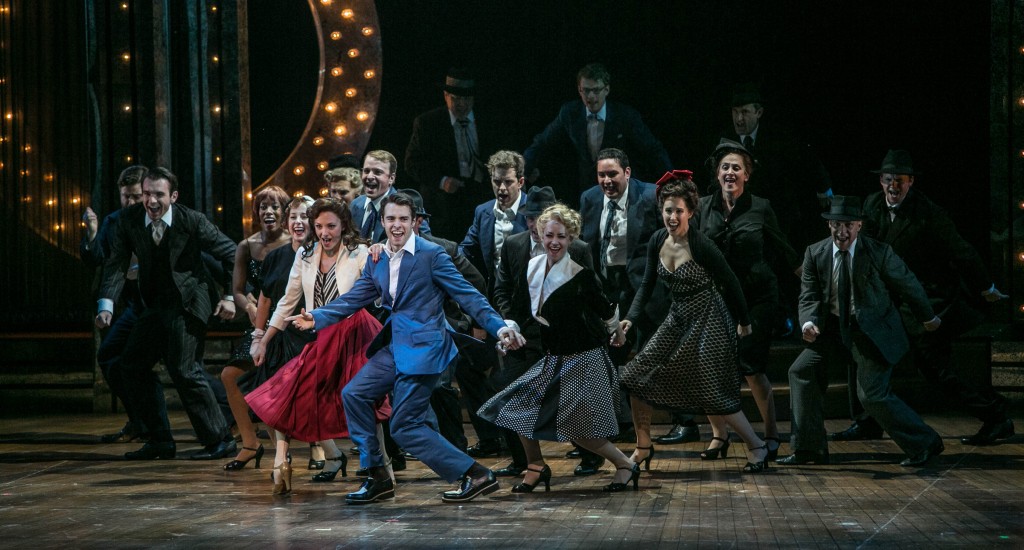Swing Reborn! How ‘The Bandstand’ at Paper Mill Playhouse Is Giving New Life to a Classic Genre

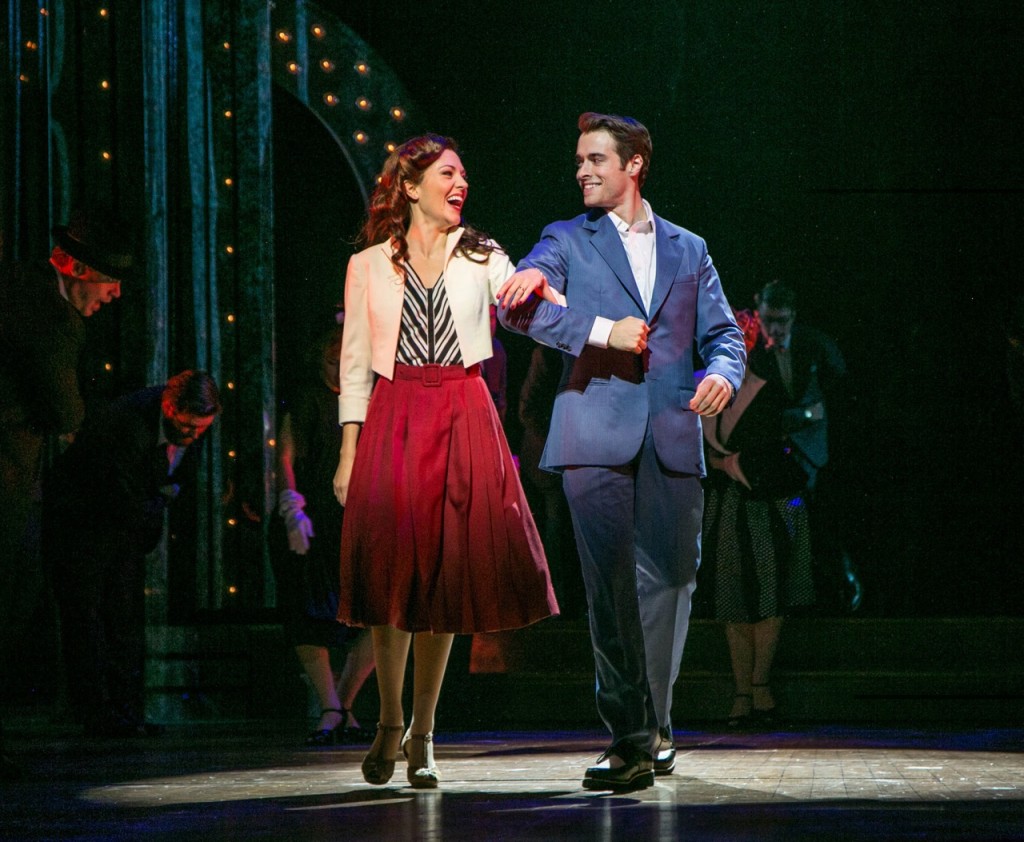
The Bandstand at Paper Mill Playhouse; Photo by Jerry Dalia; Laura Osnes (Julia) LEFT, Corey Cott (Donny) RIGHT and the company of The Bandstand
In a time when franchises are rebooted almost weekly and classic genres are infused with modern twists, the moment has come for the MGM-style movie-musical to be reexamined. Enter Richard Oberacker and Robert Taylor, the composers of the new swing musical “The Bandstand,” making its world premiere at Paper Mill Playhouse through November 8. Self-described “obsessive theatergoers,” the duo has created a show that pays homage to the movie-musicals of the 1940s and 50s, but brings a slice of realism to its story that is going to take audiences by surprise. Set in 1945 Cleveland, Ohio, “The Bandstand” tells the story of a group of World War II veterans who join together in a songwriting contest that promises Hollywood fame. Broadway favorites Corey Cott (“Newsies”) and Tony Award-nominee Laura Osnes (“Cinderella”) play at the center of an original, swing-filled score.
“We wanted to create a musical that would revive ideas and traditions that seem to have been lost in current musical theater,” Oberacker said, “but that was completely contemporary in terms of its structure and the way we tell stories today.”
Although “The Bandstand” is high energy and follows what Oberacker and Taylor call “a bullet train plot,” the themes of the show dig much deeper than its ancestor musicals. As characters who must pick up the pieces of their lives after the war, Osnes plays Julia Trojan, a widow who is convinced to join the songwriting competition by Cott’s Donny Novitski, her husband’s best friend who served beside him in battle.
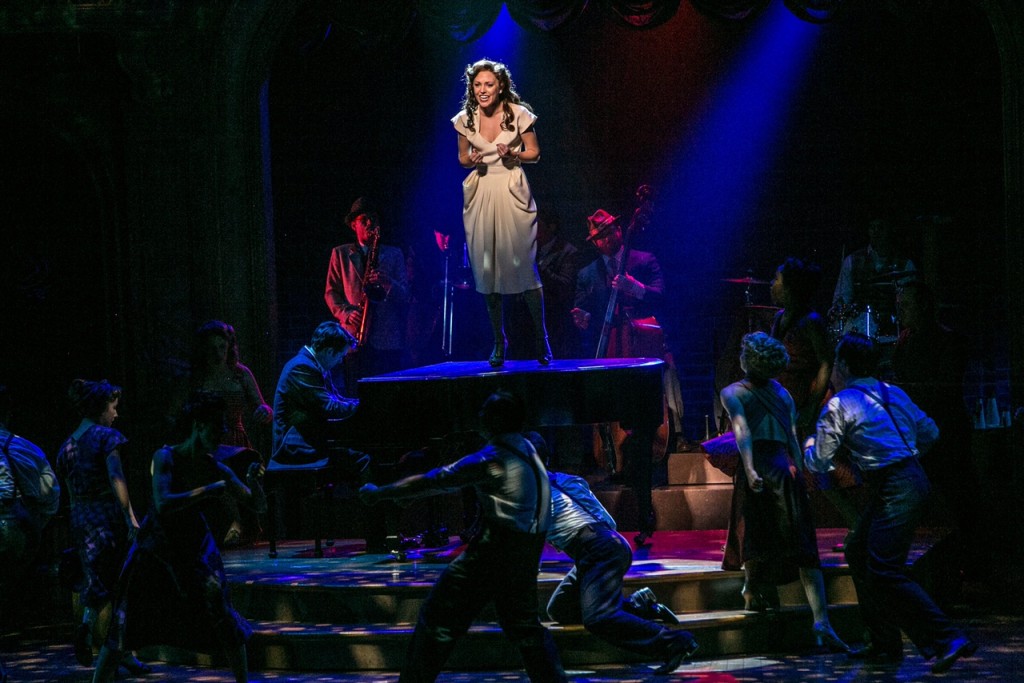
The Bandstand at Paper Mill Playhouse; Photo by Jerry Dalia; Laura Osnes (Julia) CENTER and the company of The Bandstand
“There's a little bit of a polish, a falseness, that we've come to accept in musicals. When you go to a play, that’s when you expect realism,” Oberacker said. “We asked what would happen if we turned that upside down.”
As a result, “The Bandstand” reaches an emotional depth that audiences wouldn’t normally associate with musicals of this genre.
“It's very surprising when people are dealing with coming home to families as changed people. War changes you. That is pretty serious stuff.”
For Oberacker, “The Bandstand” literally hits home. The composer, lyricist and book writer grew up in Ohio and set the musical in Cleveland, where he spent most of his childhood, as a tribute to his family. Now in his mid 40s, Oberacker said many of the characters are loosely based on people he grew up with and reflect the working class people he always felt were underserved. “There was a certain nobility about these common people that I just wanted to capture. I'd never seen them in a musical before.”
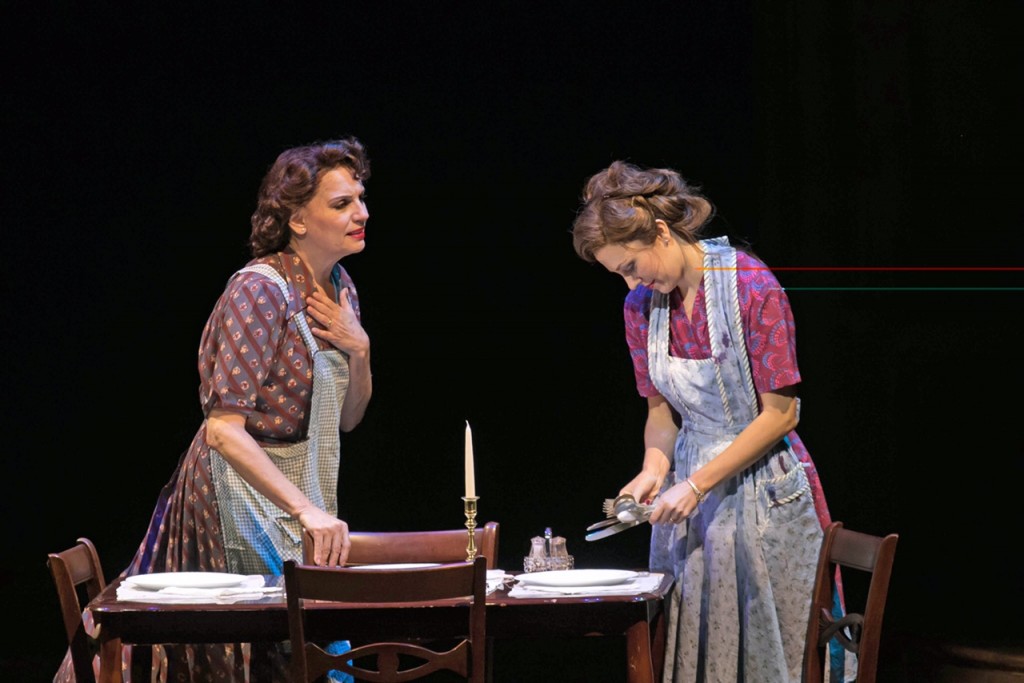
The Bandstand at Paper Mill Playhouse; Photo by Jerry Dalia; Beth Leavel (Mrs. Adams) LEFT and Laura Osnes (Julia) RIGHT
Although the musical has connections to his upbringing, Oberacker said he connects to the story most as a musician. Referring to Cott’s main character, he said he identifies with Donny as someone who “has been doing what he was born to do for a very long time,” yet lives with “that feeling of being overdue for your recognition.”
Oberacker and Taylor began their creative partnership 15 years ago while on the first national tour of “The Lion King”—Oberacker was conducting, Taylor was first violinist. While “The Bandstand” is their fifth musical together, it is their highest profile production to date.
“The thing I loved most about the piece when I first read it is even though it's set in the 1940s and it has a true sense of period authenticity,” continued Blankenbuehler, “ I believed that there could be an edge to it that really appealed to a contemporary audience.”“There's this great combination of total authenticity and cutting-edge guts,” Andy Blankenbuehler said of Oberacker and Taylor’s writing. Blankenbuehler, fresh off of choreographing the white-hot “Hamilton” on Broadway, has directed and choreographed “The Bandstand.” A longtime friend of Oberacker’s, Blankenbuehler said he was looking for a 1940s-set musical, coming off of the contemporary hits” Bring It On: The Musical,” “In The Heights” (for which he won a Tony for choreographing) and the hip-hop-based “Hamilton.”
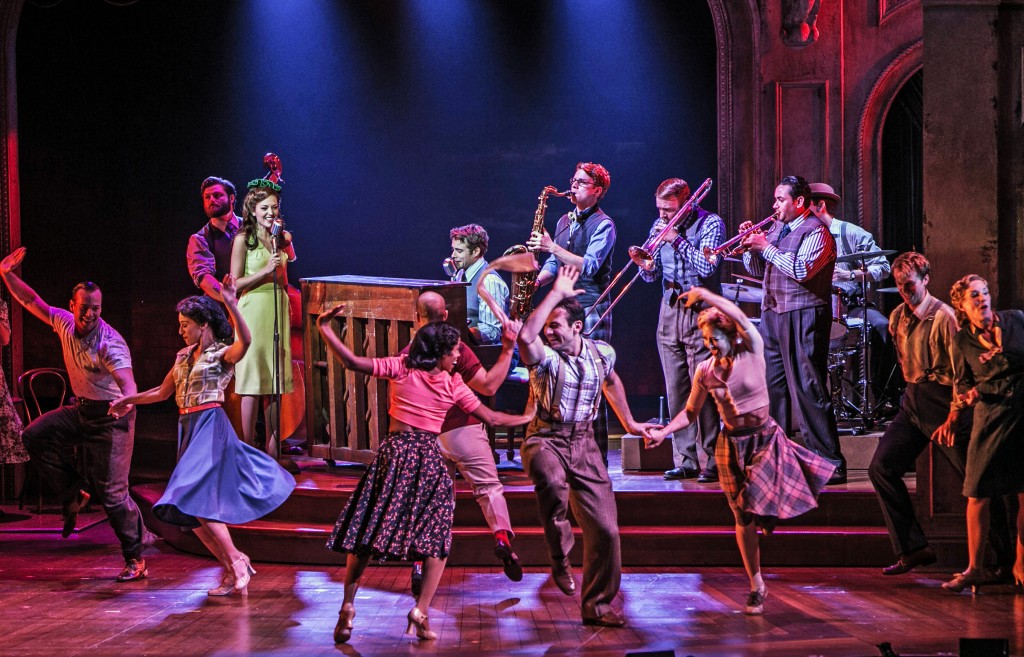
The Bandstand at Paper Mill Playhouse; Photo by Jerry Dalia; Laura Osnes (Julia) LEFT CENTER, Corey Cott (Donny) RIGHT CENTER and the company of The Bandstand
With the phenomenal success of “Hamilton” still in his wake, Blankenbuehler said” The Bandstand” is the biggest show he’s worked on, production wise. “One second you're in one club and three seconds later, you're in another club. Then we’re paying homage to classic movie musicals and we go into these huge dance numbers. Huge! Like, I'm-going-to-NYC-to-be-a-star dance numbers.”
Mounting “The Bandstand”’s gigantic production numbers come naturally to Blankenbuehler; it’s getting stars Osnes and Cott through their characters’ complex emotional journeys that he said is his biggest challenge. “I’ve never taken an acting class. For me, that groundwork is uncharted territory,” he said. “Their characters have to deal with loss and moving forward. What's great for both [Osnes and Cott] in this piece is it's stretching them in new ways that is very interesting to them.”
For Osnes, in particular, Oberacker strongly (yet cryptically) hints at a new threshold for the in-demand actress. “Laura is America's sweetheart in the theater right now. She’s Cinderella! She begins the show with a wholesome, Judy Garland, wide-eyed sensibility, and by the last 10 minutes of this show, you will not believe you are witnessing what you are witnessing,” said Oberacker. “I assure you, it will change everyone's mind about what Laura Osnes is capable of as a mature artist.”
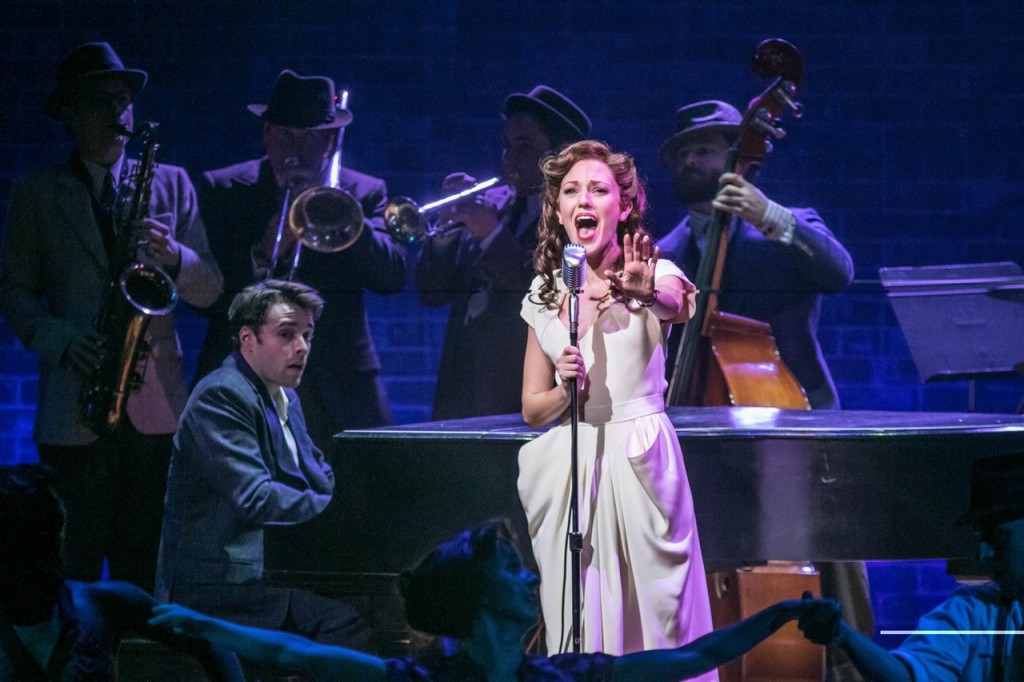
The Bandstand at Paper Mill Playhouse; Photo by Jerry Dalia; Laura Osnes (Julia) LEFT, Corey Cott (Donny) RIGHT CENTER and the company of The Bandstand
The song Oberacker refers to is “The Bandstand”’s 11 o'clock number, “Welcome Home,” which contains an unexpected twist during the musical’s conclusion.
“It is so demanding, emotionally and vocally. I cannot wait for the world to know that she's capable of that.”
Though “The Bandstand” is premiering at a time when most new musicals steer clear of the sounds of the classic American songbook, Taylor intends to use this story, which takes place 70 years in the past, to highlight the issues we face today. “I think there are so many connections between what we're going through now and what people were going through immediately after World War II,” Taylor said. “I think the audience will sense those connections; they'll be able to understand it and feel it from an honest, truthful perspective.”

